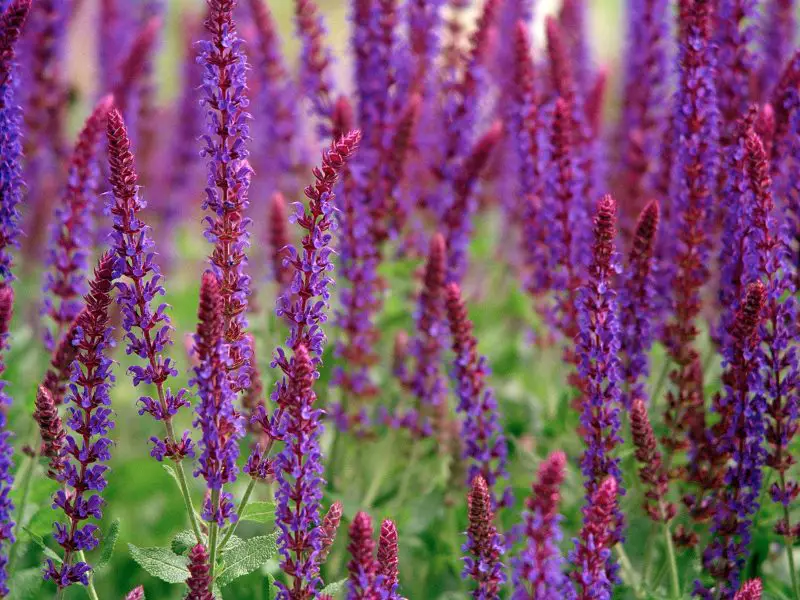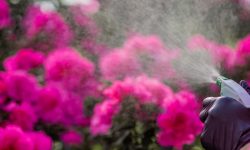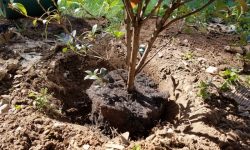For pet lovers who also adore gardening, every plant choice matters—especially when your furry friend is known to sniff, chew, or dig. Among the many vibrant, easy-to-grow flowers available, salvia often tops the list for its beauty and resilience. But as any responsible dog owner would ask: Is salvia safe for dogs? The answer can affect more than just your landscape—it can impact your dog’s health and happiness.
This guide will walk you through everything you need to know about salvia’s potential toxicity, how to identify harmful varieties, and smart strategies for growing a pet-safe garden. Whether you’re planting your first flower bed or revamping a colorful backyard oasis, knowing what’s truly safe for your pup is the first step toward a thriving garden both you and your dog can enjoy.
Understanding Salvia: What Kind of Plant Is It?

Salvia is a diverse and colorful genus of plants belonging to the mint family, Lamiaceae. With over 1,000 species spread across the globe, salvias are known for their vibrant tubular flowers, aromatic foliage, and exceptional resilience in gardens. They can be annuals, perennials, or even small shrubs, depending on the species and climate.
In ornamental gardening, salvias are prized not only for their long bloom times and vivid colors—ranging from deep blues and purples to reds, pinks, and whites—but also for their ability to attract pollinators like bees, butterflies, and hummingbirds. They thrive in sunny spots with well-drained soil and require minimal care once established, making them popular among both novice and experienced gardeners.
Some species, such as Salvia officinalis (culinary sage), are also used for cooking and herbal remedies, while others like Salvia splendens or Salvia nemorosa are cultivated purely for aesthetic value. However, it’s important to note that not all salvias are created equal when it comes to pet safety. While many are harmless, a few species—particularly those with psychoactive or medicinal properties—can pose risks to dogs if ingested. Understanding the specific type of salvia you’re planting is essential for creating a garden that’s both beautiful and pet-friendly.
Is Salvia Toxic to Dogs?
In general, most common salvia species found in gardens are considered non-toxic to dogs. This includes popular varieties like Salvia splendens and Salvia officinalis. According to the ASPCA (American Society for the Prevention of Cruelty to Animals), these types are not listed as harmful to canines.
That said, salvia plants are not necessarily edible for dogs. Even though they may not contain toxic compounds, ingestion can lead to mild gastrointestinal upset in some pets. Symptoms like drooling, vomiting, or diarrhea may occur if a dog eats large quantities of the leaves or flowers.
One notable exception is Salvia divinorum. While rarely grown in typical home gardens, this hallucinogenic plant contains compounds that can affect the nervous system. Ingestion by dogs could potentially cause disorientation, lethargy, or more serious symptoms. It’s best to avoid growing this variety entirely if you have pets.
Common Symptoms If a Dog Eats Salvia
Vomiting or Diarrhea
One of the first and most common signs that your dog has eaten salvia—especially in large quantities—is gastrointestinal upset. This can present as vomiting, diarrhea, or both. The cause is typically the fibrous plant matter irritating the stomach lining or the body trying to expel something it doesn’t recognize. In most cases involving non-toxic salvia varieties like Salvia officinalis or Salvia nemorosa, these symptoms are mild and resolve on their own within 24 hours. However, it’s still important to withhold food for a few hours and offer fresh water to prevent dehydration. If the vomiting or diarrhea is persistent or accompanied by other concerning signs, a veterinary visit may be needed.
Drooling or Pawing at the Mouth
Excessive drooling or pawing at the mouth can occur when a dog reacts to the texture, taste, or scent of the salvia plant. The leaves of some species have a strong aroma or mildly bitter taste that can cause oral discomfort or irritation. While this symptom may look dramatic, it’s usually not dangerous and tends to pass quickly once the dog has stopped chewing the plant. Rinsing your dog’s mouth with clean water and distracting them with a favorite treat or toy can help ease the reaction. Still, it’s worth watching your pet to make sure the discomfort doesn’t worsen or interfere with eating and drinking.
Lethargy or Disinterest in Food
Some dogs may experience mild nausea or a drop in energy after ingesting salvia, especially if the amount consumed was significant. This can lead to lethargy—appearing unusually tired or inactive—or temporary loss of appetite. These symptoms are usually linked to minor digestive upset or general malaise. If your dog seems quiet, uninterested in its usual activities, or skips a meal, observe closely for any additional symptoms. While most dogs bounce back within a day, continued lethargy beyond 24–48 hours should be discussed with your vet to rule out other potential causes.
Neurological Signs (Rare)
If your dog accidentally ingests Salvia divinorum, a rare psychoactive species sometimes used in herbal or recreational settings, the effects can be significantly more serious. This type of salvia contains compounds that affect the brain and can trigger disorientation, imbalance, shaking, excessive vocalization, or even hallucinations in pets. Unlike ornamental or culinary salvias, Salvia divinorum poses a real toxic risk and requires immediate veterinary attention. Quick intervention can help stabilize your pet and prevent lasting effects. If you suspect your dog has eaten this specific species, don’t wait—contact your vet or a pet poison hotline right away.
What to Do If Your Dog Eats Salvia
Discovering that your dog has eaten a salvia plant can be alarming, especially if you’re unsure of the species. The good news is that most commonly grown salvias—like Salvia splendens and Salvia officinalis—are considered non-toxic to dogs. However, any unfamiliar plant ingestion can lead to symptoms or complications, especially if consumed in large amounts or if your dog has a sensitive stomach.
Stay Calm and Assess the Situation
The first step is to remain calm. Panic can prevent you from making clear decisions. Try to identify exactly what your dog consumed. Take note of the type of salvia, how much was eaten, and when the ingestion likely occurred. If you’re unsure of the plant species, take a photo or bring a sample with you for identification if a vet visit becomes necessary.
Watch for Symptoms
Not all dogs will react the same way. Monitor your dog closely for at least 24–48 hours. Common mild reactions may include vomiting, diarrhea, excessive drooling, or temporary lethargy. If these symptoms are mild and your dog remains alert and hydrated, you can likely manage the situation at home with careful observation.
Provide Comfort and Hydration
If your dog vomits or has diarrhea, make sure they have access to clean water to prevent dehydration. Offer bland food like plain boiled chicken and white rice once their stomach settles, but only if they’re interested in eating. Avoid giving any medication unless instructed by a veterinarian.
Call Your Vet or Pet Poison Helpline
If you suspect your dog may have eaten a toxic variety like Salvia divinorum, or if symptoms escalate—such as persistent vomiting, weakness, confusion, or tremors—contact your veterinarian immediately. You can also reach out to a pet poison hotline for immediate guidance.
Bring Information With You
If you need to visit the vet, bring a sample or a photo of the plant. The more information the vet has about what your dog ingested, the faster and more accurately they can treat it. Be ready to share your dog’s weight, age, medical history, and the timeline of symptoms.
Prevention Moving Forward
Once your dog is stable, consider replacing or relocating the salvia plant to prevent future incidents. Use fencing, raised planters, or pet-safe zones in your garden to minimize access to ornamental plants. Training your dog to avoid eating plants can also be helpful for long-term safety.
By acting quickly and thoughtfully, most situations involving salvia ingestion can be resolved without serious harm. Prevention and awareness are key to creating a garden that is both beautiful and safe for your furry companions.
How to Identify Salvia Species in Your Garden
Identifying the salvia species growing in your garden is essential for keeping your dog safe. While most culinary and ornamental salvias like Salvia officinalis and Salvia splendens are non-toxic, a few rare species such as Salvia divinorum can be harmful if ingested. Knowing exactly what’s growing in your yard helps prevent accidental exposure.
Start by examining the leaves. Culinary sage usually has thick, gray-green leaves with a strong herbal scent. Ornamental types tend to have softer green leaves, oval or lance-shaped, often without a noticeable aroma. Salvia divinorum stands out with large, soft, bright green leaves that have serrated edges and little to no scent.
The flowers also offer clues. Safe ornamental salvias often have vibrant red, pink, or purple blooms arranged in spikes. If your plant has pale purple or white flowers, it could belong to a different species—so take a closer look.
Scent is another simple indicator. Rub a leaf between your fingers. If it smells like sage or mint, it’s likely one of the common, pet-safe varieties. Leaves without scent or with an unusual odor may warrant further investigation.
If you’re uncertain, use a plant identification app or bring a cutting to a local nursery or extension office. Labeling your plants when you first plant them is a smart way to track what’s in your garden and avoid confusion in the future.
Pet-Safe Alternatives to Salvia
If you’re looking to create a beautiful, dog-friendly garden without the risks that certain types of salvia may pose, there are many safe and stunning alternatives to consider. Catmint (Nepeta) is a top choice, offering soft purple flowers and aromatic foliage that resembles salvia in appearance and bloom time, but is entirely non-toxic to dogs. Bee balm (Monarda) is another great substitute, featuring vibrant red or purple blooms that attract hummingbirds and butterflies without endangering your pets.
Snapdragons bring a wide range of colors and a charming cottage-garden look, while marigolds and zinnias are hardy, easy to grow, and add bright splashes of orange, yellow, and red to your flowerbeds—all without posing any threat to canine companions. For gardeners seeking height and texture, spider flowers (Cleome) and bachelor’s buttons (Centaurea) are safe options that add visual interest without toxic effects.
When selecting pet-safe plants, it’s always wise to consult trusted resources like the ASPCA’s toxic plant database or your veterinarian. With thoughtful planning, you can enjoy a lush, colorful garden that’s as safe for your dog as it is beautiful for your home.
Tips for Creating a Dog-Friendly Garden
Create Boundaries Around Flower Beds
Setting up clear physical boundaries around your garden beds helps discourage dogs from trampling, digging, or nibbling on plants. Low decorative fences, wooden edging, or even raised beds can signal to your dog that certain areas are off-limits. This not only protects your plants but also creates a sense of structure and order in your garden design.
Train Dogs to Avoid Certain Areas
Training plays a crucial role in managing your dog’s behavior in the garden. Use positive reinforcement—like treats, praise, or playtime—to reward them when they avoid restricted areas. Consistency is key: redirect unwanted behavior each time it occurs. With time and patience, your dog will learn where they’re allowed to roam and where they shouldn’t step paw.
Avoid Using Toxic Mulches or Pesticides
Some mulches, such as cocoa mulch, smell like chocolate but contain theobromine, which is poisonous to dogs. Choose safer options like shredded pine, cedar bark, or untreated wood chips. Additionally, many commercial fertilizers, herbicides, and pesticides contain ingredients that are harmful if ingested. Always check labels and opt for pet-safe or organic products whenever possible.
Keep Fresh Water Available
A common reason dogs chew on plants is dehydration, especially on hot days. Ensure your dog has easy access to clean, fresh water while outdoors. A dedicated water bowl in a shaded area of the garden can reduce plant-chewing behaviors and keep your pet comfortable and well-hydrated during playtime.
Regularly Inspect and Maintain Your Garden
Vigilant garden maintenance keeps both your plants and pets safe. Remove fallen leaves, dead flowers, and rotting plant matter that may attract pests or mold. Keep an eye out for mushrooms, which can appear overnight and may be toxic. Inspect for signs of harmful insects or disease and treat them with non-toxic methods to prevent accidental pet exposure.
What Veterinarians Say About Salvia and Dogs
Veterinarians generally consider most common salvias, such as Salvia officinalis (culinary sage), to be non-toxic to dogs when consumed in small, occasional amounts. If your dog nibbles on a leaf or two, it’s unlikely to cause serious harm. However, problems may arise if the dog eats large quantities or ingests concentrated forms such as salvia essential oils, which can irritate the digestive system and even affect the nervous system in sensitive dogs.
Some ornamental salvia varieties—especially those not commonly used in cooking—have been reported to cause mild gastrointestinal upset, including vomiting, drooling, or diarrhea. While these symptoms are typically not life-threatening, they can be distressing to both the dog and the owner. In more severe cases, such as with smaller dogs or repeated ingestion, lethargy and loss of appetite may also occur.
Veterinarians advise pet owners to identify which salvia species are growing in their garden and research their safety profile. When in doubt, it’s best to keep potentially risky plants out of reach and opt for known pet-safe alternatives. If your dog has ingested a large amount of salvia or is showing unusual symptoms, it’s always safest to contact your vet or an animal poison control hotline promptly. Early action can prevent complications and ensure your pet stays healthy and safe.
Teaching Your Dog Not to Chew Plants
Use Bitter Sprays on Plants
Bitter-tasting sprays are an effective and humane way to discourage chewing. These pet-safe sprays are available at most pet or garden stores and can be applied directly to leaves and stems. The unpleasant flavor deters dogs without harming the plant or your pet. Reapply regularly, especially after rain or watering, as the effect wears off over time.
Provide Engaging Toys and Chews
Dogs chew to relieve boredom, teething discomfort, or anxiety. Supplying a variety of stimulating toys and chew options—such as rubber bones, puzzle feeders, or frozen treats—can redirect that energy away from your plants. Rotate the toys regularly to keep your dog interested and reduce destructive behavior due to monotony.
Reward Desired Behaviors
Positive reinforcement is more effective than punishment. Reward your dog with treats, affection, or playtime when they avoid garden beds or walk calmly by your plants. Use commands like “leave it” or “no” consistently, and reinforce correct choices immediately. This builds a lasting habit and teaches your dog that ignoring plants leads to praise.
When to Seek Emergency Help
Despite your best efforts, accidents can happen. If your dog chews a potentially toxic plant, stay calm and monitor them closely. Symptoms such as drooling, vomiting, tremors, seizures, or difficulty breathing require urgent veterinary care. Take a sample or photo of the plant to help with diagnosis, and call your vet or an animal poison control hotline right away. Fast action could save your pet’s life.
Frequently Asked Questions
Is salvia poisonous to dogs if they only nibble a small amount?
Even a small amount of salvia can cause digestive upset in some dogs, especially if it’s a variety high in essential oils. While not all species of salvia are highly toxic, symptoms like drooling, vomiting, or lethargy can still occur. It’s best to prevent any chewing and monitor your dog closely if exposure happens.
What are the signs of salvia poisoning in dogs?
Common signs of salvia toxicity may include vomiting, diarrhea, excessive drooling, loss of coordination, tremors, or lethargy. In rare cases, neurological symptoms such as disorientation or seizures may appear. If any of these symptoms show up after contact with salvia, seek veterinary care immediately.
Can I grow salvia in a garden where my dog plays?
Yes, but with precautions. If you choose to grow ornamental salvia, plant it in raised beds, containers, or fenced-off areas where your dog can’t reach. Always supervise your dog in the garden and provide them with safe toys to prevent chewing on garden plants.
Are there dog-safe alternatives to salvia that still attract pollinators?
Absolutely. Flowers like bee balm, snapdragons, sunflowers, and zinnias are generally non-toxic to dogs and are excellent at attracting bees and butterflies. These plants offer the color and pollinator appeal of salvia without posing a risk to curious pets.
What should I do if I suspect my dog ate salvia but shows no symptoms yet?
Don’t wait for symptoms to appear. Call your vet or a pet poison control hotline right away. Have the name of the plant (or a photo) ready to share. The vet may advise you to induce vomiting, monitor at home, or bring your dog in for observation based on the species of salvia and amount consumed.
Final Thoughts: Is Salvia Safe for Dogs?
The answer depends on the species. Most salvia varieties found in ornamental or herb gardens are not toxic to dogs. However, ingestion can still cause mild symptoms in sensitive pets. Salvia divinorum should be avoided entirely.
By knowing what’s in your garden and observing your dog’s behavior, you can enjoy the beauty of salvia while keeping your four-legged friend safe. With a few adjustments, your outdoor space can be a safe haven for all members of the family.






